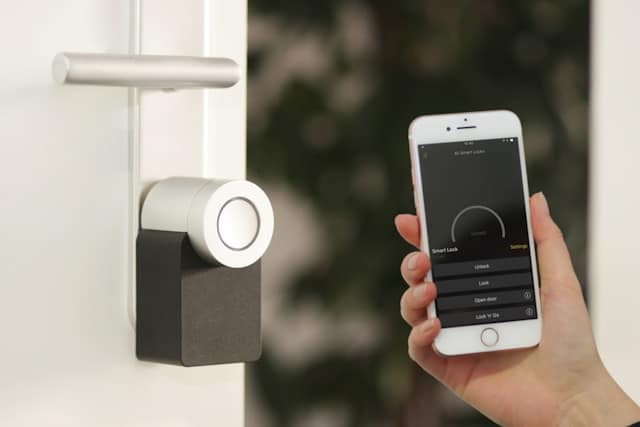Indoor air quality (IAQ) is a significant concern for homeowners. The quality of air in our homes has a direct impact on our health and well-being. With advances in technology, particularly in the realm of artificial intelligence (AI) and the Internet of Things (IoT), it is now possible to monitor and improve the quality of air indoors using smart home devices. This article will delve deep into how these devices are leveraging AI to enhance the indoor air quality in our homes.
Sensing and Monitoring Air Quality with Smart Devices
Air quality monitoring is the first step towards improving it. There are a number of smart devices available in the market that can monitor and track the quality of indoor air. These devices are equipped with various sensors that can detect and measure pollutants and other harmful substances in the air.
Also read : How Can AI-Driven Root Cause Analysis Tools Decrease Maintenance Costs in Manufacturing?
These smart devices provide real-time data about the air quality inside your home. This data is then analysed using AI algorithms to determine whether the air quality is healthy or not.
AI plays a crucial role in the interpretation and analysis of the data collected by these sensors. It can identify patterns and trends in the data, which can provide valuable insights into the sources of pollution and how to mitigate them.
Have you seen this : What Role Do Advanced Telematics Systems Play in Fleet Management Efficiency?
For instance, if the data shows a consistent increase in the levels of a certain pollutant during a particular time of the day, the AI can identify this trend and suggest possible sources, such as cooking or the use of certain appliances.
Smart Home Systems for Improved Indoor Air Quality
Smart home systems go beyond merely monitoring the air quality in your homes. These systems are designed to actively improve the quality of indoor air using various methods.
One of the main ways in which these systems work is by integrating with your home’s heating, ventilation, and air conditioning (HVAC) system. Once the smart device detects a drop in air quality, it can automatically adjust the HVAC system to increase ventilation or air filtration.
Many of these smart home systems also use AI to learn your habits and preferences over time. They can then use this information to adjust the HVAC system preemptively, based on your usual activities and routines.
Additionally, these systems can provide alerts and recommendations to the homeowner. For instance, if the system detects high levels of humidity for a prolonged period, it can alert the homeowner and suggest steps to reduce moisture levels, such as using a dehumidifier or improving home insulation.
IoT Devices, Energy Efficiency, and Indoor Air Quality
The Internet of Things (IoT) is a key component of smart home systems and devices. IoT enables these devices to connect and communicate with each other, creating a network of devices that can work together to improve indoor air quality.
One of the ways in which IoT devices help improve air quality is through energy efficiency. Many IoT devices are designed to be energy efficient, and they can help reduce the energy consumption of your home. This is not only good for the environment, but it can also reduce the pollution generated by energy production.
For example, smart thermostats can learn your schedule and preferences, adjusting the temperature of your home to save energy while still ensuring comfort. This not only reduces energy consumption, but also minimises the amount of pollutants produced by heating and cooling systems.
Health Implications of Indoor Air Pollution and the Role of Smart Devices
Poor indoor air quality can have a significant impact on health. Long-term exposure to indoor air pollutants can lead to a range of health problems, including respiratory diseases, allergies, and even some types of cancer.
Smart devices help to mitigate these risks by continuously monitoring the quality of air in your homes. They can provide real-time data about the presence and levels of pollutants, allowing you to take immediate action to improve air quality.
Furthermore, these devices can provide data over time, enabling you to track the effectiveness of measures taken to improve indoor air quality. This can help in making informed decisions about home improvements or changes in lifestyle that can further enhance indoor air quality.
In summary, smart home devices, powered by AI and IoT, are playing a pivotal role in improving indoor air quality. They provide a proactive approach to monitoring and improving air quality, ensuring a healthier and safer living environment.
AI-enabled Air Purifiers and HVAC Systems for Cleaner Indoor Air
Artificial intelligence (AI) has taken a leap forward in the world of smart home devices, specifically in indoor air quality monitoring and enhancement through smart air purifiers and HVAC systems. Combining the power of AI with the advancements in IoT, these devices not only monitor but actively contribute to improving the indoor air quality.
Most modern homes are equipped with HVAC systems that control the temperature and humidity. When paired with smart sensors, these systems can automatically adjust the indoor environment based on the real-time air quality data. The systems can increase ventilation or activate air filtration as required, eliminating potential pollutants and allergens from the air.
AI-enabled air purifiers, on the other hand, are making a significant impact in homes. These devices use various sensors to track the presence of harmful substances in the air, such as dust, mold, volatile organic compounds (VOCs), and more. The AI algorithms interpret this data and automatically adjust the purifier’s settings to efficiently cleanse the indoor air.
Due to their low cost and high efficiency, these AI-enabled air purifiers are becoming an essential part of modern homes. By efficiently eliminating air pollutants, these devices significantly reduce the risk of respiratory diseases, allergies, and other health complications related to poor indoor air quality.
Harnessing AI and IoT for Energy Efficiency and Better Indoor Air
The intersection of AI and IoT has begun to redefine energy efficiency in the context of improving indoor air quality. The use of smart home systems significantly contributes to energy saving by optimizing the operation of various home devices based on the real-time data.
AI algorithms analyze the data collected by IoT based systems and make efficient energy usage decisions. For example, smart thermostats, integrated with AI algorithms, can learn and predict the homeowner’s behaviour and preferences, adjusting the temperature and humidity accordingly. This not only enhances indoor air quality but also reduces energy consumption, leading to lower carbon emissions and energy bills.
Moreover, AI and IoT have ushered in the era of predictive maintenance, where devices can send alerts for system failures or malfunctions before they happen. This ensures the HVAC systems and air purifiers are always functioning at their best, keeping the indoor air clean and healthy.
Conclusion
The advent of artificial intelligence and the Internet of Things has revolutionized the way we monitor and improve indoor air quality. Through the integration of smart sensors, IAQ monitoring has become more accurate and efficient. AI-enabled HVAC systems and air purifiers actively work towards improving the air quality, making our homes healthier and safer.
The use of these smart home devices has also brought about significant energy efficiency, reducing our carbon footprint and contributing to a more sustainable future. By providing valuable insights into the sources and patterns of indoor air pollution, these devices enable us to make informed decisions to further enhance our home environment.
Therefore, investing in smart home devices, especially those leveraging AI and IoT, can significantly improve indoor air quality, leading to a healthier and more comfortable living environment. As technology continues to evolve, we can expect even more advanced and efficient solutions in the future to tackle the challenge of indoor air pollution.






